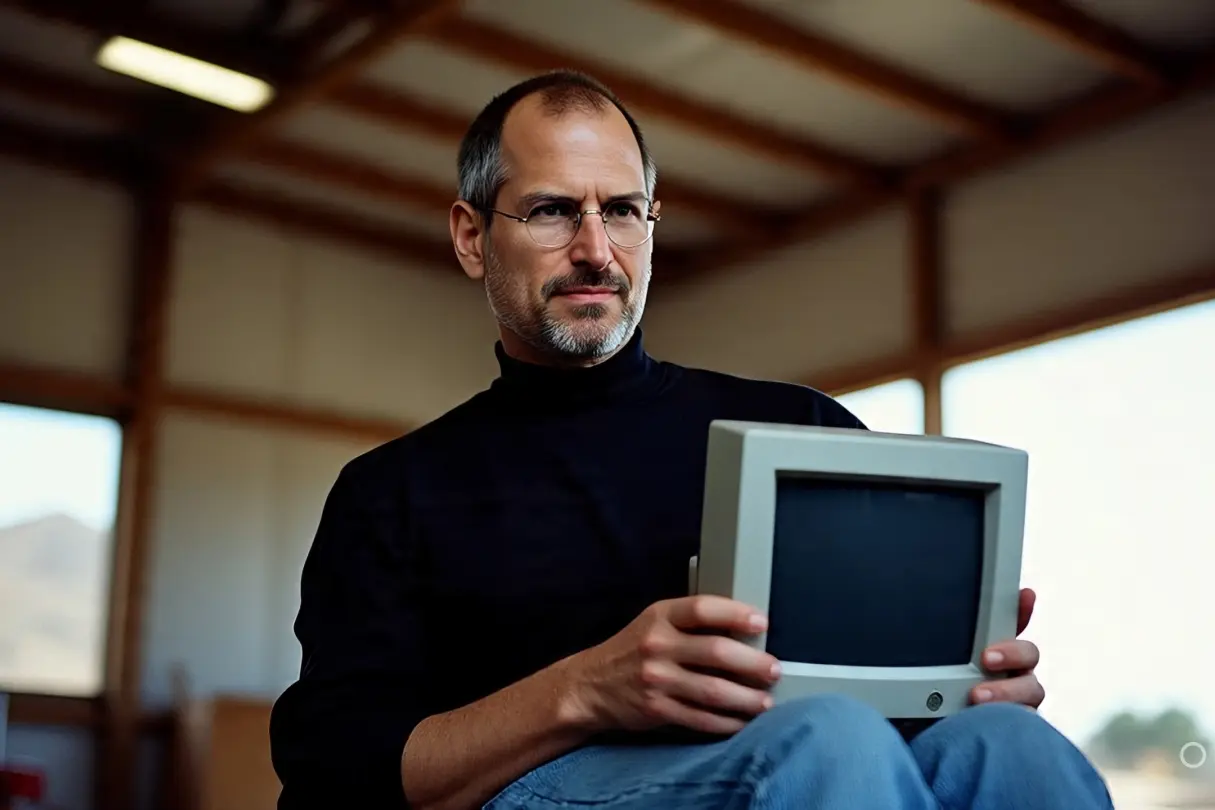👶 Adopted Beginnings and the Promise of Education
Steve Jobs entered the world on February 24, 1955, in San Francisco. Born to a Syrian father and an American mother, his biological name was likely Abdul Lateef Jandali. Because his parents weren’t married, they decided to give him up for adoption. The baby ended up with Paul and Clara Jobs—a blue-collar couple who promised one thing: Steve would go to college.
- 👶 Adopted Beginnings and the Promise of Education
- 🧠 A Young Mind Meets Silicon Valley
- 🎓 Reed College: Education on His Own Terms
- 📞 Blue Boxes, Atari, and India
- 🚀 Founding Apple in a Garage
- 🍼 Lisa, the Mac, and Personal Failure
- 🎨 Pixar, NeXT, and a Comeback
- 📱 iPod, iPhone, iPad – Changing the World Again
- 🧘♂️ A Perfectionist, A Family Man, A Mystery
- 🩺 Health Struggles and the Cost of Magical Thinking
- 📝 Resignation and Legacy
🧠 A Young Mind Meets Silicon Valley
From a young age, Steve was captivated by electronics. He tinkered, explored, and skipped a grade thanks to a fourth-grade teacher who bribed him with candy and money to finish his schoolwork. But not everything was smooth. Bullied in middle school, Jobs insisted on switching schools, and his parents obliged, moving to a better district in Los Altos—the heart of what would become Silicon Valley.
It was there that he met Steve Wozniak, a fellow electronics nerd. Their friendship would later launch Apple.
🎓 Reed College: Education on His Own Terms
Jobs did go to college, fulfilling his adoptive parents’ promise—but he dropped out after one semester at Reed College. Still, he lingered around campus, auditing classes that interested him. One of them, a calligraphy course, would influence the elegant typography found in Apple products.
He lived cheaply, survived off recycled Coke bottles and free meals at a Hare Krishna temple, and dove deep into spiritual reading and experimentation with psychedelics. These experiences shaped his obsession with simplicity and design.
📞 Blue Boxes, Atari, and India
Jobs and Wozniak’s first tech hustle was building and selling illegal phone-hacking devices known as “blue boxes.” It was risky—but it showed Jobs what they could accomplish with tech.
That confidence got him a job at Atari, where he worked the night shift due to his difficult personality and unconventional hygiene habits. He even soaked his feet in the toilet to relieve stress.
After a stint in Germany, Jobs convinced Atari to fund a trip to India, where he sought spiritual awakening. The culture and philosophies he encountered left a permanent mark on his life and leadership.
🚀 Founding Apple in a Garage
In 1976, Steve Jobs, Steve Wozniak, and Ronald Wayne started Apple in the Jobs family garage. Wayne bailed early—big mistake. Jobs secured early funding, Woz coded the tech, and soon, the Apple I was born.
But it was the Apple II that changed everything. It brought computers into homes and schools, exploding sales and launching Jobs into the tech elite. By 25, he was worth millions.
🍼 Lisa, the Mac, and Personal Failure
Not all was golden. The Apple III flopped. So did the Lisa computer—named after his daughter Lisa, whom he initially denied fathering. Though he eventually admitted the computer’s name was indeed for her, their relationship remained strained.
Then came the Mac. Sleek, powerful, and revolutionary—until it didn’t sell. Jobs clashed with then-CEO John Sculley, and the board sided with Sculley. Jobs was ousted from his own company.
🎨 Pixar, NeXT, and a Comeback
Jobs didn’t sulk. He started NeXT, a company building high-end computers for education. He also bought a tiny graphics division from George Lucas, turning it into Pixar.
At Pixar, he fought to make Toy Story’s lead character more likable, showing his attention to emotional connection—not just pixels. The movie became a landmark in animation.
Meanwhile, Apple was sinking. In a twist of fate, Apple bought NeXT in 1997, bringing Jobs back. The NeXT software became macOS. Jobs became CEO again.
📱 iPod, iPhone, iPad – Changing the World Again
Back at Apple, Jobs teamed up with designer Jony Ive. Together, they created the iMac, iPod, iPhone, and iPad. Each changed how we interact with tech.
And then there was the “Think Different” campaign—Apple’s bold rebranding to show it wasn’t just another tech company. It worked. The voiceover? Jobs recorded it himself, but later insisted someone else do it because he hated how he sounded.
🧘♂️ A Perfectionist, A Family Man, A Mystery
Jobs could be brutal. His perfectionism drove Apple forward but made working with him challenging. He yelled. He obsessed. He furnished his house sparsely because he couldn’t find “perfect” furniture.
But he was also a husband and father. He married Laurene Powell and had three more kids. Colleagues admit: Apple’s renaissance wouldn’t have happened without him.
🩺 Health Struggles and the Cost of Magical Thinking
In 2003, a scan for kidney stones revealed something far more serious: a rare pancreatic tumor. It was treatable with surgery—but Jobs refused, turning instead to diets and alternative treatments.
He believed in the power of will. At Apple, he made the impossible happen. He wanted to do the same with cancer. But eventually, he had part of his pancreas removed, and later, a liver transplant. It bought him time, but not enough.
📝 Resignation and Legacy
In 2011, Jobs stepped down as CEO. He died a few months later, on October 5, at home, surrounded by family. He was 56. His final words were simple:
“Oh wow. Oh wow. Oh wow.”
He was buried in an unmarked grave at his request.
Jobs once said: “Your work is going to fill a large part of your life, and the only way to be truly satisfied is to do what you believe is great work.”
And if you haven’t found that work yet? Keep looking. Don’t settle.




